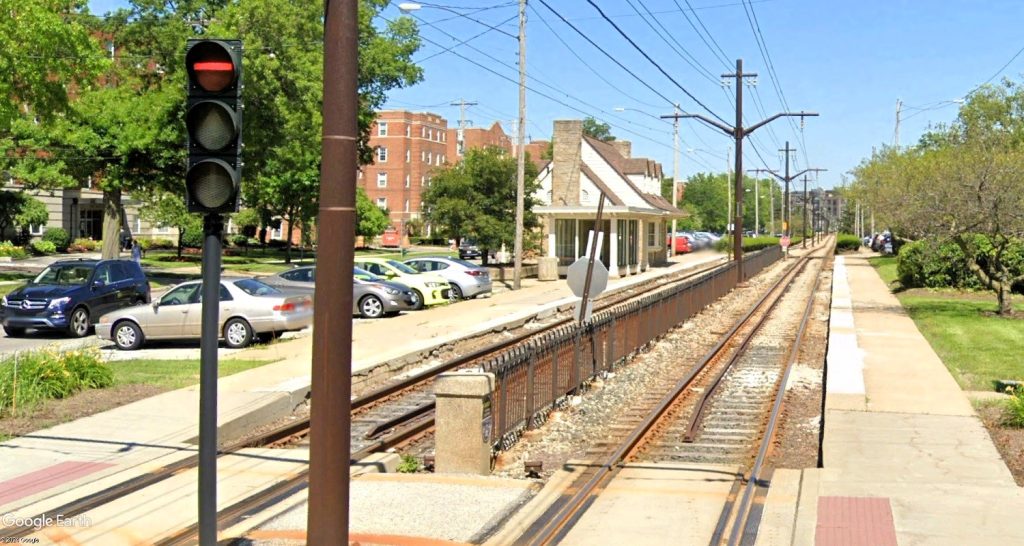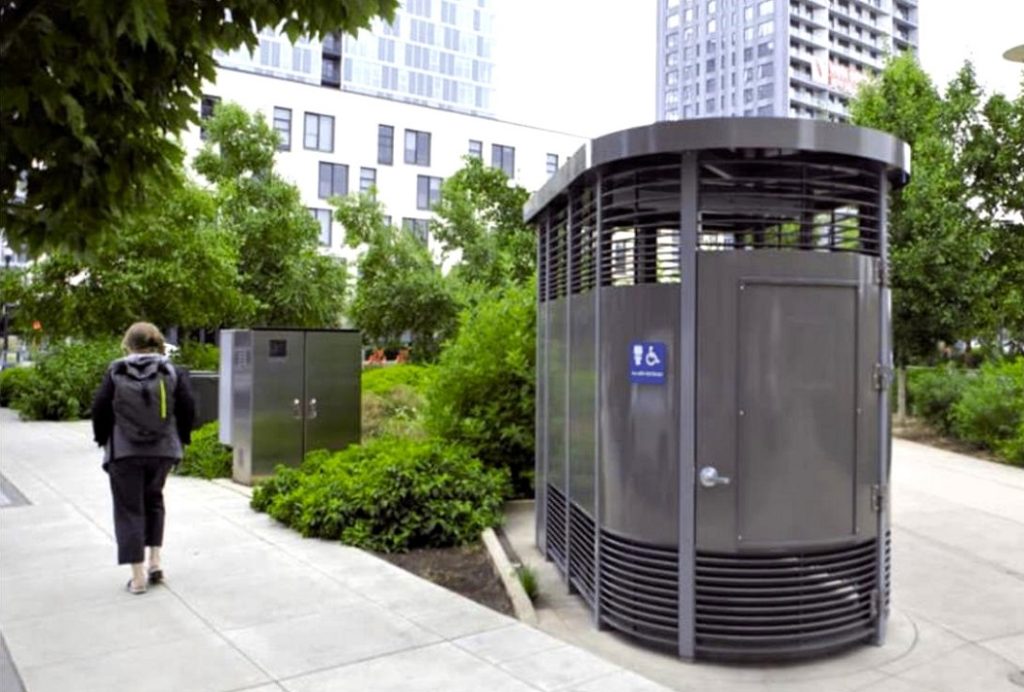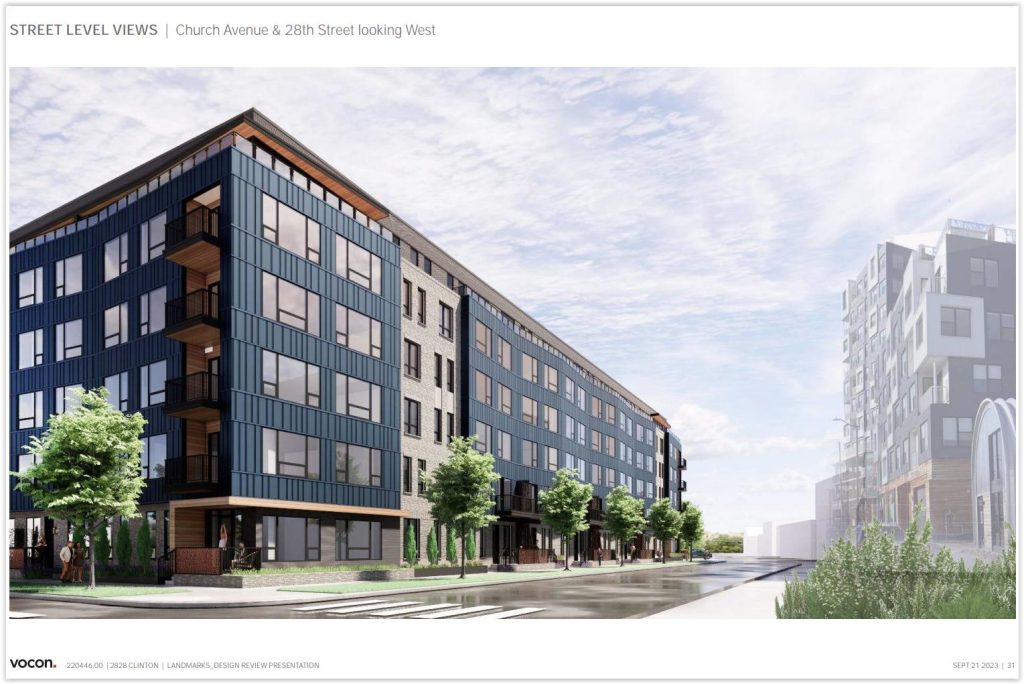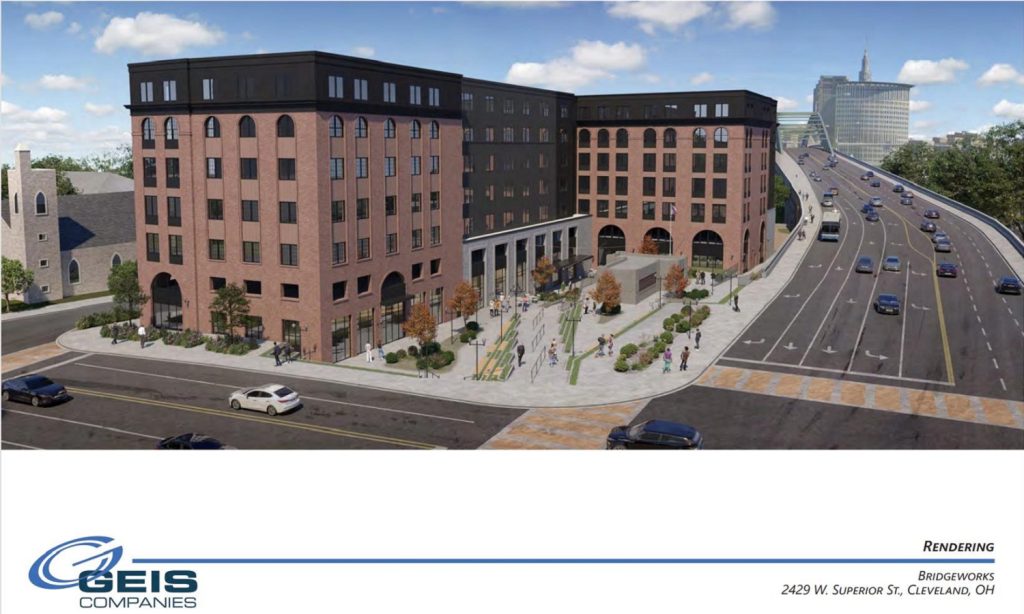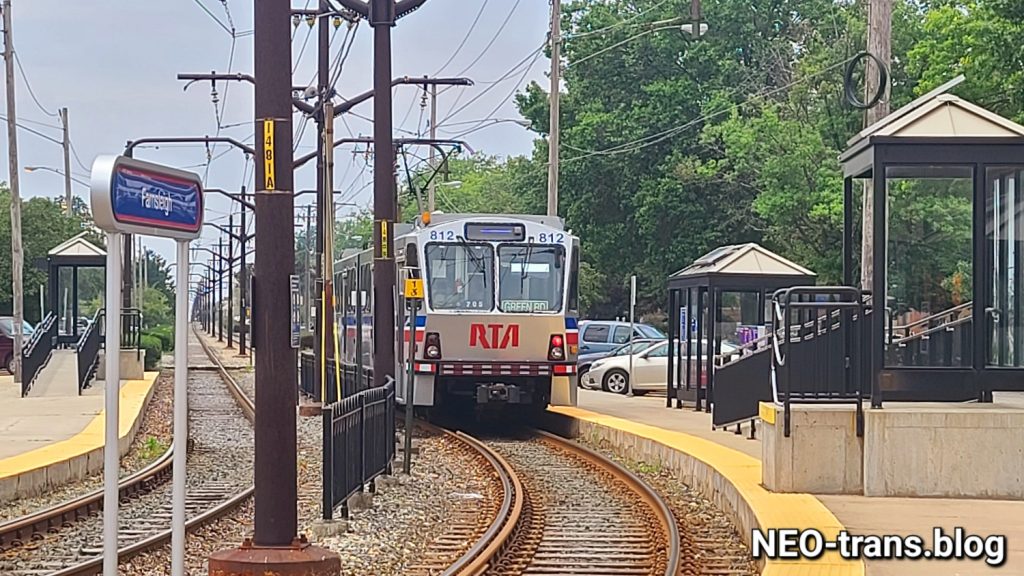
This is what all of the single-level stations along the light-rail Blue Line in Shaker Heights will soon look like, thanks to a federal grant awarded today. Like the Farnsleigh station seen here, all will have new trackside platforms, tactile edges, waiting areas and ramps to mini-high platforms so wheelchair passengers and those unable to climb steps can board trains (KJP). CLICK IMAGES TO ENLARGE THEM.
Federal grant awarded today to fund work
ARTICLE UPDATED MAY 29, 2024
The Greater Cleveland Regional Transit Authority (GCRTA) needed $16 million from the Federal Transit Administration (FTA) to rebuild eight of its stations in Shaker Heights along the light-rail Blue Line. Not only did GCRTA get the full $16 million, it got the money it needed on the first try. That’s a big win considering the FTA received nearly $1.1 billion in requests nationwide for the $343 million in stations funding available this year.
With the funding award announced today, GCRTA officials said they hope to start work next year on rebuilding the Ashby, Avalon, Drexmore, Kenmore, Lynnfield, Onaway, Southington and Woodland stations to comply with Americans with Disabilities Act (ADA) standards.
That work includes the replacement of trackside platforms, new waiting shelters, tactile edges, curb ramps from parking areas, and ramps to mini-high platforms for wheelchair passengers and others who cannot climb the trains’ steps, GCRTA said in a press release.
“The Blue Line is very important to us as it connects Shaker Heights from the Van Aken District, to the Chagrin-Lee corridor, Shaker Square, and ultimately to downtown and the airport,” said David E. Weiss, mayor of Shaker Heights and GCRTA board member. “Light-rail access is a selling point for Shaker Heights so these upgrades are especially welcome.”
That’s just some of the plans GCRTA has for rebuilding the Blue Line light-rail branch in the median of Van Aken Boulevard and the Green Line branch down Shaker Boulevard. Both lines run combined from Shaker Square west to Downtown Cleveland.
In total, GCRTA plans to invest about $208 million in improving the Blue and Green lines from 2024-28, including new trains, tracks, signals and another $16 million to rebuild the last eight stations on the Green Line in Shaker Heights. Funding for rebuilding the Green Line stations is not yet in hand.
The last time the Blue and Green lines were significantly rebuilt was in 1980-81. GCRTA modernized the Blue and Green light-rail lines as a promise to Shaker Heights following GCRTA’s creation in 1975 and its acquisition of the city-owned Shaker Heights Rapid Transit. While the stations were maintained and repairs made as needed, major improvements to comply with the ADA law from 1991 have been elusive.
GCRTA rebuilt the two-level Blue Line station at Lee Road and the Farnsleigh station which is the second-last station at the Blue Line’s east end. The last station, Warrensville, is getting relocated as a result of a $6 million project to move the Blue Line tracks and build a new bus and rail station with a climate-protected building with restrooms. That work will support more transit-oriented development as part of the Van Aken District.
Funding for the improving the last eight Blue Line stations was awarded from the All Stations Accessibility Program (ASAP), a new program created by the Bipartisan Infrastructure Law and championed by President Joe Biden and sponsored by U.S. Senator Sherrod Brown (D-Ohio).
“Improving the accessibility of these rail stations will improve transit options for riders with disabilities and create opportunity for everyone,” Brown said in a written statement.
Inaccessibility is a significant hurdle for riders using rail systems built before 1990, known as legacy systems. More than 900 transit legacy stations nationwide are not fully accessible today, according to the FTA. GCRTA’s Blue and Green lines trace their origins to 1913.

Greater Cleveland Regional Transit Authority crews make repairs to aging concrete platforms at the Blue Line’s Onaway station in July 2021. Since this photo was taken, the grassy area in the background saw development begin on the the 18-unit Van Aken Mews which followed the 12-unit Townhomes of Van Aken, built next door in 2017 (Google).
This is the second GCRTA station grant from ASAP. The first, for $8 million, also will benefit a Blue Line station. The East 79th Street light-rail station, which is also used by Green Line trains, will be rebuilt. Final design of the East 79th Blue/Green line station is due to be done in October with construction starting in March.
“We are not only modernizing our nation’s infrastructure, we are doing so in a way that makes it more accessible for older Americans, people with disabilities, and all transit users,” said U.S. Transportation Secretary Pete Buttigieg. “This initiative, made possible by the Bipartisan Infrastructure Law, is retrofitting old rail stations with elevators, ramps, and more, to make sure that our public transportation is more accessible for millions of Americans going about their daily lives.”
“Excellent news,” said GCRTA Deputy General Manager Engineering & Project Management, Michael J. Schipper. “We are very thankful to win this grant for a second time after having won an ASAP grant of $8 million in 2023, for the rehabilitation of the East 79th Street light rail station.”
“Since the passage of the Americans with Disabilities Act, great strides have been made in improving accessibility, but there is still a lot of work to accomplish,” said FTA Acting Administrator Veronica Vanterpool.
“By modernizing rail systems across the country, the ASAP program provides funding to address these overdue improvements,” she continued. “We want to ensure that all customers can use transit systems with ease and reliability, including people with disabilities, those using mobility devices, and other users needing more accessible spaces.”
END

